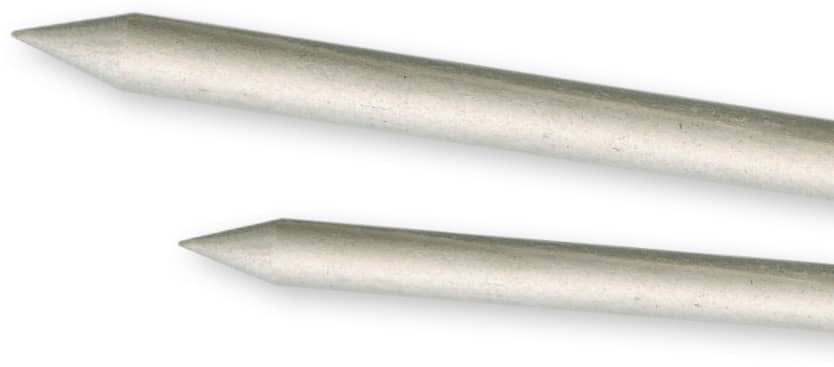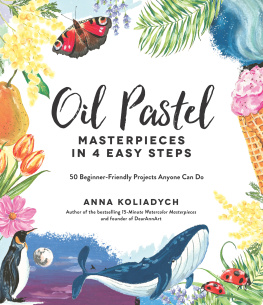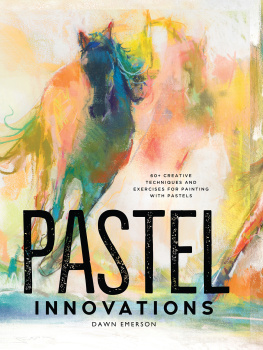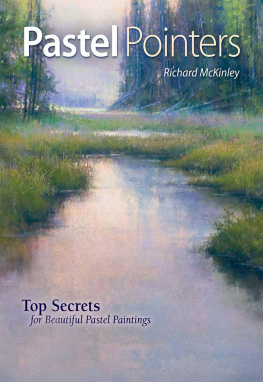Beginning
PASTEL
Tips and techniques for learning to paint in pastel


Introduction
I am passionate about painting in pastel! Nature gives us so many beautiful pigments, which are used to make pastels. Think about that for a moment: All of these beautiful colors are derived from nature and carefully blended to make hundreds of wonderful pastels to choose from!
Artists have been painting with pastels since the Renaissance. By the eighteenth century, pastels had grown in popularity, and they were favored by many Impressionists during the nineteenth century, particularly Claude Monet and Edgar Degas. Some of their pastel paintings look as fresh today as the day they were painted, all those years ago. Today, with the increase in pastel choices and the developments in surfaces, pastel painting has never been more popular.
As an artist, I have tried many mediums, but once I picked up a pastel, that was it. One of the things I love about pastel is that it is a very hands-on medium, which allows you to interact with it and develop your own style of painting.
In this book, I will guide you through this wonderful medium, starting with the basic elements like materials and choosing a subject and then progressing to step-by-step exercises, which will enable you to use all of the tips and techniques you have learned.
When I first started painting in pastel, I was amazed at how quickly I could produce a finished painting. I hope you will be too! Lets begin.
I would like to thank my wife, Kate, for her photography skills, boundless enthusiasm, and encouragement in producing Beginning Pastel. Without her, this book would not have been possible.

GETTING
Started

What is Pastel?
Pastels are made up of three primary ingredients:
PIGMENT is a finely ground color in powder form. It is the key ingredient used to color the paint. Pigments are ground from vegetable, mineral, animal, or synthetic origins.
FILLER is used to give more volume to pastels and to affect the color. More filler is added to reduce the intensity of the color.
BINDER is used in very small amounts to mold the pastel into sticks. Binder is typically made of either gum arabic or gum tragacanth.
PASTEL IS CONSIDERED BOTH A DRAWING AND A PAINTING MEDIUM, COMBINING THE BEST OF BOTH WORLDS.

Tools & Materials
There has never been a better time to begin working with pastels! To many people, pastel is an exciting new medium that enables them to paint in different ways. If you are new to the medium, here are the materials I use and how they work for me.
SETTING UP
You should work upright when painting with pastels, with the surface taped to a board and attached to an easel. Ideally you should work from the top of the painting downward. However, if you dont want to stand, consider a tabletop easel.
SOFT PASTELS
There is a fantastic range of pastels to choose from. I work almost exclusively with half-stick soft pastels. The creamy consistency and vibrant colors of soft pastels mean that you can paint very quickly and intuitivelyno color mixing is needed. A wide variety of brands, colors, and sizes is available.

PASTEL PENCILS
Pastel pencils are, as the name suggests, pastels in pencil form. They enable artists to produce highly detailed drawings, particularly animals, birds, and buildings. I prefer my pencils to be soft so they will not damage the surface.

CHARCOAL STICKS
The charcoal sticks I use are made from natural willow and are specially designed for drawing. They produce a soft effect that is ideal for fine detail and creating shadows. Willow charcoal sticks are available in long lengths and different thicknesses.

BLENDING TOOLS
I prefer to use my fingertips for blending colors together, but if this is not for you, try wearing a surgical glove, or use a number of blending tools, such as blending stumps, watercolor brushes, and paper towels. You can even use cotton swabs!

KEEPING IT CLEAN
Keeping your painting clean is vital if you want to maintain its beautiful colors. Clean your hands at regular intervals as you apply pastel color to the surface. I use wet wipes to clean my hands, and then I thoroughly dry them with a cloth or paper towel.
SURFACES
I have tried many different surfaces, both paper and card, and now I paint primarily on a sanded card surface. Sanded card is available in many colors and grades. It can be purchased in sheets or pads of varying sizes. Try out a few different brands, colors, and grades before deciding which surface feels right for you.

tip
PASTEL IS A DRY MEDIUM, SO MAKE SURE TO WORK ON A SURFACE WITH AMPLE TOOTH (TEXTURE) TO ENABLE THE PASTEL TO ADHERE TO THE SURFACE.
OTHER OPTIONS FOR SURFACES
Rough drawing paper
Fine-toothed drawing paper
Sanded pastel paper
Cold-pressed paper
Laid drawing paper
Toned paper (with tooth)
Color Basics
Having a basic understanding of color will help you use it to express mood and create stimulating color effects.

UNDERSTANDING COLOR
The color wheel can be broken down into three categories: primary colors, secondary colors, and tertiary colors. The three primary colors are red, yellow, and blue. These cannot be created by mixing other colors, and all colors are created from the three primaries.
Combining two primary colors creates a secondary color. Secondary colors include orange, green, and purple. Tertiary colors are created by mixing a primary color with a secondary color. Tertiary colors include red-purple, red-orange, yellow-orange, yellow-green, blue-green, and blue-purple.
















